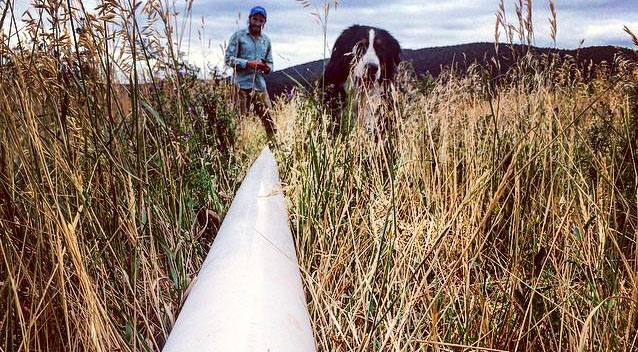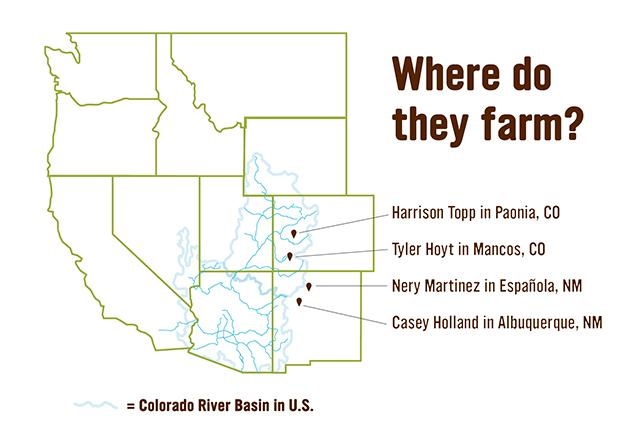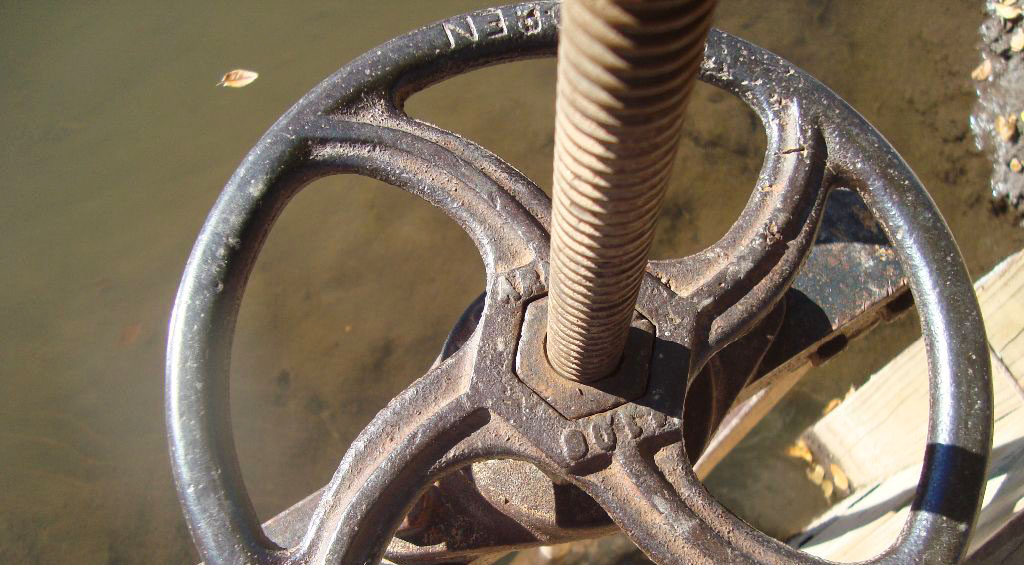
Young farmers and ranchers in the arid West contend with all of the challenges faced by farmers in other regions—high land prices, access to capital, and often student loan debt—but they also face an additional barrier: water access. In many parts of the country, all farmers have to do to “access” water is turn to the sky, but in the arid West, farmers and ranchers often depend on irrigation water from rivers, ditches and other bodies of water for at least part of the growing season. Accessing water, therefore, means accessing land with water rights, and those water rights are subject to a myriad of different laws and traditions as well as competition from residential communities, other industries, and wildlife.
Does it sound complicated? It is. For the next six months, four young farmers/ranchers in the arid West will be writing about their experiences with water access and explaining everything from what it feels like to clean a 400-year-old acequia to how they’ve learned to make the most of the water they have through conservation and crop selection. To help you understand the terminology around water access, we’ve also put together a short glossary at the end of this post.
So without further ado, we’re excited to introduce our 2016 bloggers:
- Harrison Topp of Topp Fruit in Paonia, Colorado and Fields Livestock in Montrose, Colorado
- Tyler Hoyt of Green Table Farm in Mancos, Colorado
- Nery Martínez of Santa Cruz Farm & Greenhouses in Española, New Mexico
- Casey Holland of Red Tractor Farm in Albuquerque, New Mexico

The voices of young farmers and ranchers are critical to building sustainable water policies and practices across the West and preserving family farming for generations to come. NYFC is working across the West to protect water for agriculture and promote the good stewardship of that water. Learn more about our work around water access and read our 2016 report, Conservation Generation: How Young Farmers And Ranchers Are Essential to Tackling Water Scarcity in the Arid West.

Glossary of water terms:
Water right: Considered a property right; the right to use a portion of the public’s surface or groundwater resource under applicable legal procedures
Acre-foot: Amount of water that will cover an acre of land at a depth of one foot, or 325,851 gallons of water
Ditch: A channel constructed to deliver water for irrigation (also known as an irrigation canal)
Acequia: An irrigation conveyance structure, such as a ditch, introduced to the United States by the Spanish and still used today; also the word for the organization or community that maintains the acequia
Reservoir: An artificial lake built to store water
Beneficial use: The lawful use of water with reasonably efficient practices to put that water to use without waste
Call: In times of shortage, senior water rights holders may “call” for water, thus curtailing deliveries to undecreed or junior water users in order to fulfill the beneficial use need of the decreed senior use right
Diversion: Removing water from its natural course or location, or controlling water in its natural course or location, by means of a water structure such as a ditch, pipeline, pump, reservoir, or well
Return flow: Water that returns to streams, rivers or aquifers after it has been applied to a beneficial use
Cover crops: Non-cash crops that can provide multiple benefits including erosion prevention, nutrient availability, weed suppression and water availability
Soil health: The continued capacity of the soil to function as a vital living ecosystem that sustains plants, animals, and humans
Soil organic matter (SOM): The part of the soil that contains anything that once lived. It aids in crop growth, reduces erosion, retains nutrients, stores water
Support for this series was generously provided by the Walton Family Foundation.